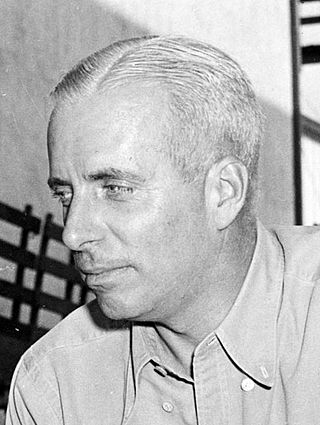
Howard Winchester Hawks was an American film director, producer, and screenwriter of the classic Hollywood era. Critic Leonard Maltin called him "the greatest American director who is not a household name." Roger Ebert called Hawks "one of the greatest American directors of pure movies, and a hero of auteur critics because he found his own laconic values in so many different kinds of genre material." He was nominated for the Academy Award for Best Director for Sergeant York (1941) and earned the Honorary Academy Award in 1974. A versatile director, Hawks explored many genres such as comedies, dramas, gangster films, science fiction, film noir, war films, and westerns. His most popular films include Scarface (1932), Bringing Up Baby (1938), Only Angels Have Wings (1939), His Girl Friday (1940), To Have and Have Not (1944), The Big Sleep (1946), Red River (1948), The Thing from Another World (1951), Gentlemen Prefer Blondes (1953), and Rio Bravo (1959). His frequent portrayals of strong, tough-talking female characters came to define the "Hawksian woman".
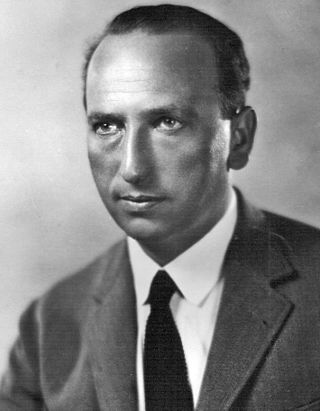
Michael Curtiz was a Hungarian-American film director, recognized as one of the most prolific directors in history. He directed classic films from the silent era and numerous others during Hollywood's Golden Age, when the studio system was prevalent.
The following is an overview of 1932 in film, including significant events, a list of films released and notable births and deaths.
This is an overview of 1929 in film, including significant events, a list of films released and notable births and deaths.
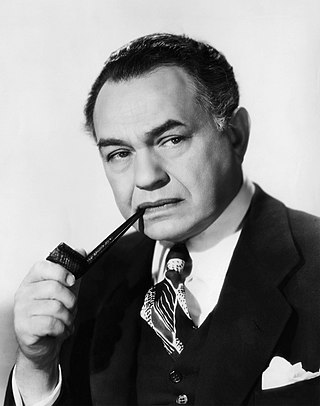
Edward G. Robinson was an American actor of stage and screen, who was popular during Hollywood's Golden Age. He appeared in 30 Broadway plays, and more than 100 films, during a 50-year career, and is best remembered for his tough-guy roles as gangsters in such films as Little Caesar and Key Largo. During his career, Robinson received the Cannes Film Festival Award for Best Actor for his performance in House of Strangers.
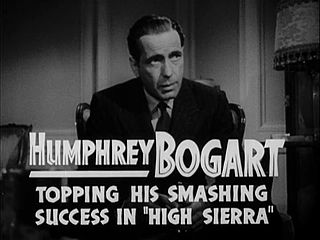
Sam Spade is a fictional character and the protagonist of Dashiell Hammett's 1930 novel The Maltese Falcon. Spade also appeared in four lesser-known short stories by Hammett.
John Lee Mahin was an American screenwriter and producer of films who was active in Hollywood from the 1930s to the 1960s. He was known as the favorite writer of Clark Gable and Victor Fleming. In the words of one profile, he had "a flair for rousing adventure material, and at the same time he wrote some of the raciest and most sophisticated sexual comedies of that period."
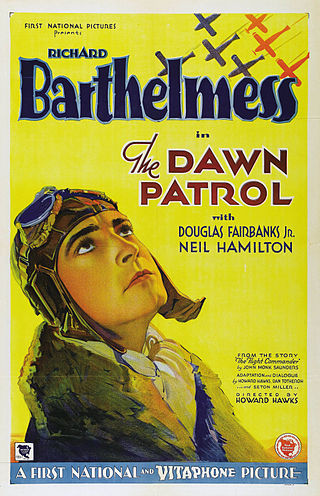
The Dawn Patrol is a 1930 American pre-Code World War I film starring Richard Barthelmess and Douglas Fairbanks Jr. It was directed by Howard Hawks, a former World War I flight instructor, who even flew in the film as a German pilot in an uncredited role. The Dawn Patrol won the Academy Award for Best Story for John Monk Saunders, an American writer said to have been haunted by his inability to get into combat as a flyer with the U.S. Air Service. It was subsequently remade in 1938 with the same title, and the original was then renamed Flight Commander and released later as part of the Warner Bros. film catalog.

Key Largo is a 1948 American film noir crime drama directed by John Huston and starring Humphrey Bogart, Edward G. Robinson and Lauren Bacall. The supporting cast features Lionel Barrymore and Claire Trevor. The film was adapted by Richard Brooks and Huston from Maxwell Anderson's 1939 play of the same name. Key Largo was the fourth and final film pairing of actors Bogart and Bacall, after To Have and Have Not (1944), The Big Sleep (1946), and Dark Passage (1947). Claire Trevor won the 1948 Best Supporting Actress Academy Award for her portrayal of alcoholic former nightclub singer Gaye Dawn.

Red Dust is a 1932 American pre-Code romantic drama film directed by Victor Fleming, and starring Clark Gable, Jean Harlow, and Mary Astor. It is based on the 1928 play of the same name by Wilson Collison, and was adapted for the screen by John Mahin. Red Dust is the second of six movies Gable and Harlow made together. More than 20 years later, Gable starred in a remake, Mogambo (1953), with Ava Gardner starring in a variation on the role Harlow played and Grace Kelly playing a part similar to one portrayed by Astor in Red Dust.
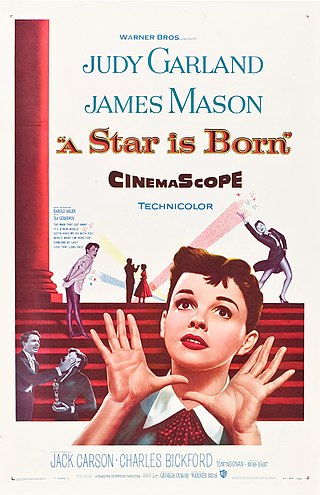
A Star Is Born is a 1954 American musical tragedy film directed by George Cukor, written by Moss Hart, and starring Judy Garland and James Mason. Hart's screenplay is an adaptation of the original 1937 film, based on the original screenplay by Robert Carson, Dorothy Parker and Alan Campbell, and from the same story by William A. Wellman and Carson, with uncredited input from six additional writers—David O. Selznick, Ben Hecht, Ring Lardner Jr., John Lee Mahin, Budd Schulberg and Adela Rogers St. Johns.

Marian Marsh was a Trinidad-born American film actress and later an environmentalist.

The Sea Wolf is a 1941 American adventure drama film adaptation of Jack London's 1904 novel The Sea-Wolf with Edward G. Robinson, Ida Lupino, John Garfield, and Alexander Knox making his debut in an American film. The film was written by Robert Rossen and directed by Michael Curtiz.
Manpower is a 1941 American crime melodrama directed by Raoul Walsh and starring Edward G. Robinson, Marlene Dietrich, and George Raft. The picture was written by Richard Macaulay and Jerry Wald, and the supporting cast features Alan Hale, Frank McHugh, Eve Arden, Barton MacLane, Ward Bond and Walter Catlett.

Action in the North Atlantic is a 1943 American war film from Warner Bros. Pictures. It was produced by Jerry Wald, directed by Lloyd Bacon, and adapted by John Howard Lawson from a story by Guy Gilpatric. The film stars Humphrey Bogart and Raymond Massey as officers in the U.S. Merchant Marine during World War II.
Seton Ingersoll Miller was an American screenwriter and producer. During his career, he worked with film directors such as Howard Hawks and Michael Curtiz. Miller received two Oscar nominations and won once for Best Screenplay for the 1941 fantasy romantic comedy film, Here Comes Mr. Jordan, along with Sidney Buchman.

The Crowd Roars is a 1932 American pre-Code drama film directed by Howard Hawks starring James Cagney and featuring Joan Blondell, Ann Dvorak, Eric Linden, Guy Kibbee, and Frank McHugh. A film of the same name was made in 1938 with a different story, starring Robert Taylor.
The Razzie Award for Worst Remake, Rip-off or Sequel is an award presented at the annual Golden Raspberry Awards for the worst film adapted from some forms of original or previous material. This category covers films that are sequels, prequels, remakes, reboots, spin-offs, film adaptations of other media franchises, mockbusters and "rip-offs".

Henry Otho was an American actor. He has worked in The Big Stampede (1932), Mary Stevens (1933), Hard to Handle (1933), The Mayor of Hell (1933), Baby Face (1933), Mandalay (1934), Wonder Bar (1934), Stranded (1935), My Bill (1938), The Fighting Devil Dogs (1938), Overland Stage Raiders (1938), Each Dawn I Die (1939).













